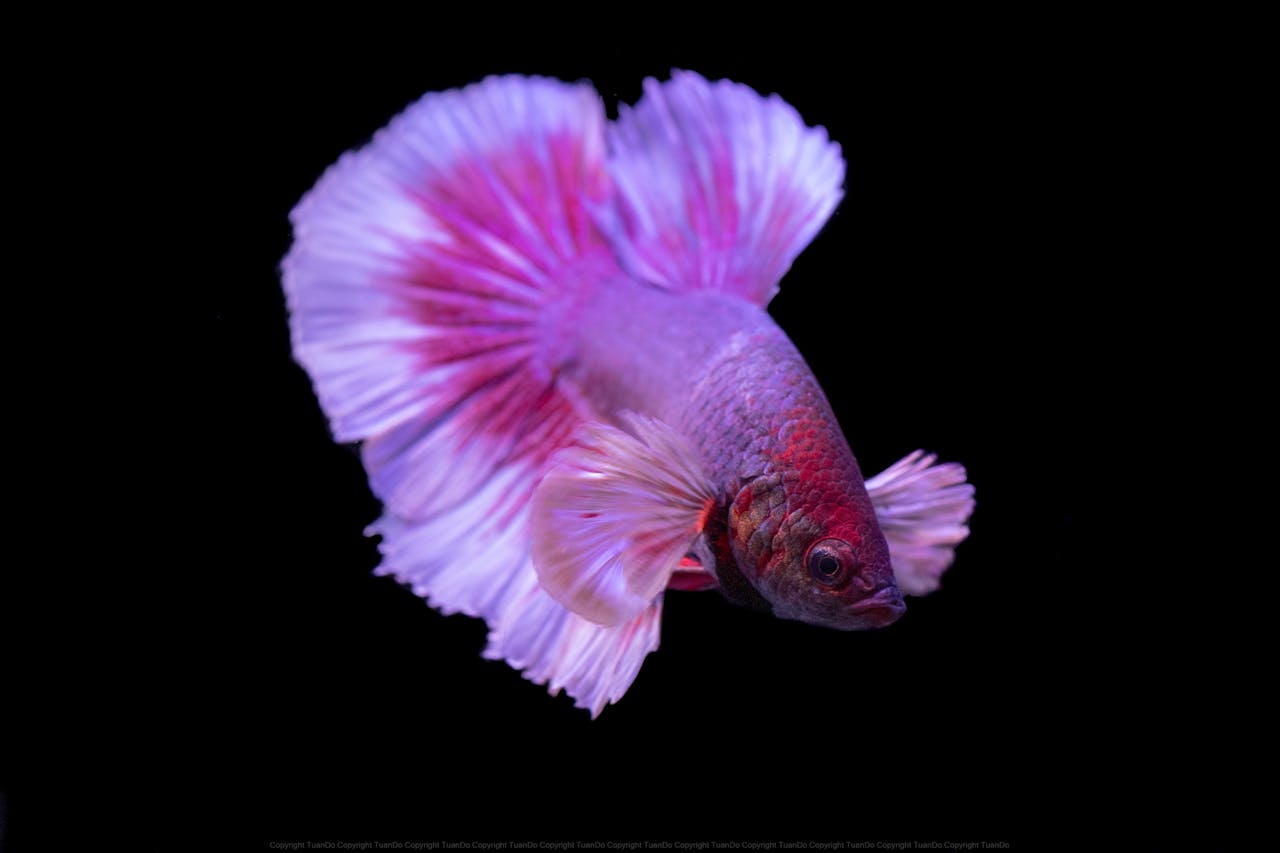As we delve into the captivating history of Betta fish, we find ourselves transported to the lush waters of Southeast Asia, where these remarkable creatures have thrived for centuries. Originating from the rice paddies, swamps, and shallow waters of Thailand, Cambodia, and Vietnam, Betta fish, also known as Siamese fighting fish, have a rich cultural significance. Historically, they were bred for their aggressive nature and used in fighting competitions, a practice that dates back to the 19th century.
The allure of these vibrant fish extended beyond mere entertainment; they became symbols of pride and status among local communities. Over time, the perception of Betta fish evolved. While their fighting prowess initially captured the attention of enthusiasts, their stunning colors and unique fin shapes began to draw admiration from aquarists around the world.
By the early 20th century, Betta fish were introduced to Western countries, where they quickly gained popularity as ornamental pets.
Today, we celebrate Betta fish not only for their beauty but also for their fascinating history that intertwines with human culture.
Key Takeaways
- Betta fish, also known as Siamese fighting fish, have a rich history dating back to 19th century Thailand where they were first bred for fighting.
- There are various types of betta fish, including the popular veiltail, crowntail, and halfmoon varieties, each with their own unique characteristics and traits.
- Betta fish come in a wide range of vibrant colors, from the classic red and blue to more exotic shades like mustard gas and galaxy.
- Proper care for betta fish includes providing a suitable tank with warm, clean water, a balanced diet, and regular maintenance to ensure their well-being.
- Breeding betta fish requires careful planning and preparation, including creating the right breeding conditions and providing proper care for the fry once they hatch.
Understanding the Different Betta Fish Varieties
Physical Variations
For instance, the Crowntail Betta is characterized by its spiky fins that resemble a crown, while the Halfmoon Betta boasts a tail that spreads out in a perfect semicircle. These variations not only add to their visual appeal but also provide us with options when selecting a Betta for our aquariums.
Temperamental Differences
In addition to physical differences, we also encounter variations in temperament among Betta fish. Some are more docile and can coexist peacefully with other fish species, while others retain the aggressive nature that made them famous in fighting rings.
Creating Harmonious Tank Environments
Understanding these differences is crucial for us as aquarists, as it allows us to create harmonious tank environments. By familiarizing ourselves with the various Betta fish varieties and their characteristics, we can make informed decisions that enhance our aquarium experience and ensure the well-being of our aquatic companions.
Exploring the Colorful World of Betta Fish

The vibrant colors of Betta fish are nothing short of mesmerizing, captivating both seasoned aquarists and newcomers alike. As we observe these aquatic gems gliding gracefully through their tanks, we are often struck by the sheer diversity of hues they exhibit. From deep blues and fiery reds to soft pastels and iridescent shades, the color palette of Betta fish is a testament to nature’s artistry.
This stunning array is not merely for show; it serves various purposes in the wild, including attracting mates and establishing territory. Moreover, the genetic factors behind these colors are equally fascinating. Selective breeding has played a significant role in enhancing the color variations we see today.
Breeders have meticulously chosen parent fish with specific traits to produce offspring that display even more vibrant and unique colors. This practice has led to the emergence of rare color combinations and patterns that continue to intrigue us. As we immerse ourselves in the colorful world of Betta fish, we gain a deeper appreciation for the artistry of nature and the dedication of breeders who strive to bring forth these extraordinary creatures.
Tips for Caring for Betta Fish
| Aspect | Tips |
|---|---|
| Tank Size | Minimum 5 gallons for one betta fish |
| Water Temperature | Keep water between 75-80°F |
| Water Quality | Regular water changes and use of water conditioner |
| Diet | Feed high-quality betta pellets and occasional treats |
| Tank Setup | Provide hiding spots and gentle filtration |
| Behavior | Observe for signs of illness or stress |
Caring for Betta fish requires a blend of knowledge and commitment to ensure their health and happiness. One of the first steps we should take is to provide them with an appropriately sized tank. While many people mistakenly believe that Betta fish can thrive in small bowls, they actually require a minimum of five gallons to swim freely and exhibit natural behaviors.
A larger tank not only allows for better water quality but also provides space for enrichment activities that keep our Betta engaged. Water quality is another critical aspect of Betta care that we must prioritize. Regular water changes and monitoring parameters such as temperature and pH levels are essential for maintaining a healthy environment.
Bettas prefer warm water temperatures between 76°F and 82°F (24°C to 28°C), so investing in a reliable heater is crucial. Additionally, we should be mindful of tank mates; while some species can coexist peacefully with Bettas, others may provoke aggression or stress. By creating a suitable habitat and being attentive to their needs, we can foster a thriving environment for our beloved Betta fish.
Breeding Betta Fish: What You Need to Know
Breeding Betta fish can be an exciting yet challenging endeavor that requires careful planning and preparation. Before embarking on this journey, we must educate ourselves about the breeding process and the specific requirements for successful reproduction. One of the first steps is selecting healthy breeding pairs with desirable traits.
Observing their behavior can provide insights into compatibility; males often display vibrant colors and elaborate fin displays during courtship, while females may exhibit vertical stripes when ready to breed. Once we have chosen our breeding pair, creating an ideal breeding environment is essential. A separate breeding tank with gentle filtration and ample hiding spots will help reduce stress during this delicate process.
We should also ensure that the water temperature is optimal for breeding; warmer temperatures can stimulate spawning behavior. After introducing the male and female Bettas into the breeding tank, we must be patient as they engage in courtship rituals that may last several hours or even days. By understanding the intricacies of breeding Bettas, we can increase our chances of successfully raising healthy fry.
The Importance of Providing a Proper Environment for Betta Fish

Creating a proper environment for our Betta fish is paramount to their overall well-being and longevity. Bettas are naturally found in shallow waters with plenty of vegetation, so replicating this habitat in our aquariums is essential. We should incorporate live or silk plants that provide hiding spots and resting areas for our fish.
Additionally, using a substrate that mimics their natural environment can enhance their comfort and reduce stress levels. Water quality plays a significant role in maintaining a healthy environment for our Bettas. Regular testing for ammonia, nitrite, nitrate levels, and pH is crucial to ensure optimal conditions.
We should also invest in a quality filtration system that provides gentle water movement since Bettas prefer calm waters over strong currents. By prioritizing these environmental factors, we create a sanctuary where our Betta fish can thrive and exhibit their natural behaviors.
Common Health Issues in Betta Fish and How to Address Them
As responsible aquarists, it is vital for us to be aware of common health issues that may affect our Betta fish and how to address them effectively. One prevalent concern is fin rot, which can occur due to poor water quality or injury. We should be vigilant in monitoring our fish’s fins for signs of fraying or discoloration.
If we notice any abnormalities, performing water changes and treating the affected fish with appropriate medications can help promote healing. Another common issue is ich, a parasitic infection characterized by white spots on the skin and fins of affected fish. If we suspect our Betta has ich, it is crucial to act quickly by raising the water temperature gradually and adding aquarium salt or specific medications designed to combat this parasite.
Regular observation and prompt action are key to preventing minor health issues from escalating into more serious problems. By staying informed about potential health concerns and taking proactive measures, we can ensure our Betta fish remain healthy and vibrant.
The Growing Popularity of Betta Fish in the Aquarium Hobby
In recent years, we have witnessed a remarkable surge in the popularity of Betta fish within the aquarium hobby community. Their striking appearance, unique personalities, and relatively low maintenance requirements make them an appealing choice for both novice and experienced aquarists alike. Social media platforms have played a significant role in this trend, allowing enthusiasts to share stunning photographs and videos of their Bettas while fostering a sense of community among fellow hobbyists.
This shift has led to greater appreciation for these beautiful creatures beyond their ornamental value; many aquarists now recognize the importance of providing suitable environments and understanding their needs. As we continue to explore the world of Betta fish together, we contribute to a growing movement that celebrates not only their beauty but also their well-being as cherished companions in our homes.
If you’re interested in learning more about the different varieties of betta fish, you should check out this informative article on bettafish.in. This article dives deep into the various colors and patterns that can be found in betta fish, providing valuable insights for both new and experienced betta fish enthusiasts. It’s a great resource for anyone looking to expand their knowledge on these beautiful and unique fish.


